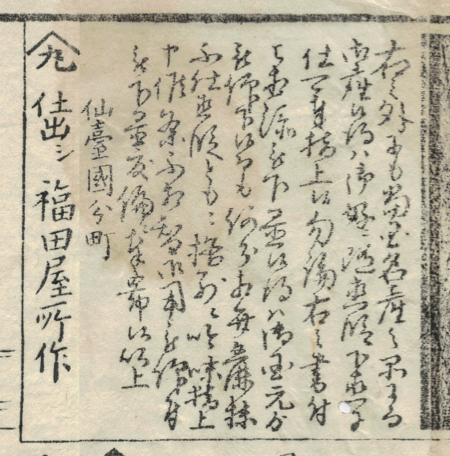Reading Japanese maps and marketing practices 8 - introduction 1

Reading sōrōbun (候文) on a map
You might have already realized that in the former text the character 候 (そうろう) appears very often at the end of phrases. This is because the phrases of this section are written in a grammatical style called sōrōbun (候文) which was quite commonly used during the Edo period for letters, proclamations and, as in this case, touristic information and product promotion. The character 候 alone implies a deferential attitude towards the reader and can be translated in modern Japanese as ~ます. Common combinations of 候with other kanji that appear in this text are:
御座候(ござそうろう)which can be translated into modern Japanese as ございます.
仕候(つかまつりそうろう)which can be translated into modern Japanese as いたします、をしてあげます、申し上げます.
被成候(なされそうろう)and 被成下候(read なしくだされそうろう)which can both be translated into modern Japanese as なさいます.
